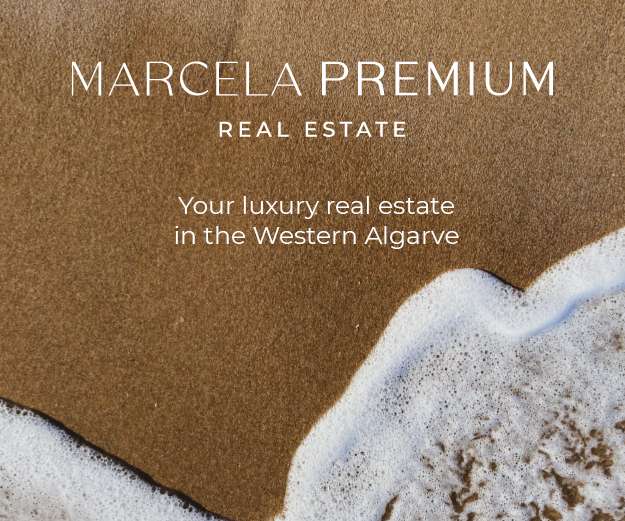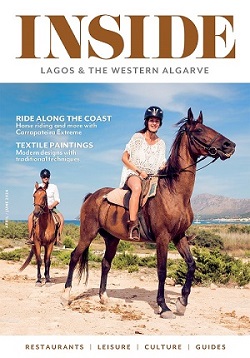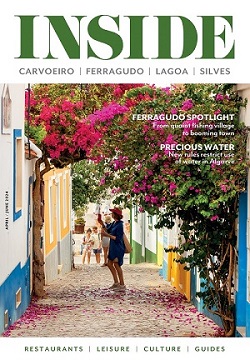Water, soap and the pressure of Maria Custódio’s hands compress the wool to felt. A simple, ancient technique that, coupled with Maria’s imagination, allows for an infinite number of design possibilities.
Unlike in Germany or France, the art of felting is not well known in Portugal where only a handful of artisans practise the art of wet or dry felt. Maria Custódio is one of these artists. Although she lived for the first 22 years of her life in Paris, and then another 22 in Hamburg, she first discovered this technique in the Algarve, settling here in 2005. “When I looked through a German magazine I noticed a bag whose shape and colours were extraordinary. Just different from what you are used to in the fashion industry,” she recalls.
Maria’s curiosity was aroused. She did some research and discovered different felting techniques, finding that this natural material offers infinite possibilities. She soon tried wet felting and has never looked back. Initially, it was a hobby but, after enthusiastic friends kept buying her pieces, she decided to see if her creations would trigger interest in others, and so she offered some pieces to place on sale at a boutique in Monchique. “Customers were fascinated and always looked for new designs,” says Maria. “That gave me the courage to continue and open my own studio.” The focus, she soon decided, should not be on sales, but on her workplace. Maria is naturally sociable and this, coupled with a desire to make her work more widely known, led her to open up her studio to the outside world. “When you enter my studio, you have the opportunity to watch me felting, to feel the sheep wool and try it out yourself,” explains Maria.
Maria has now been felting for five years. She uses wool from Merino sheep, which is particularly soft and does not smell or scratch; it heats when it’s cold and cools when it’s warm. The wool which Maria processes is also dyed according to guidelines that mean it is pollutant-tested and poses no health risk.
To make felt Maria pulls off tufts of wool and lays them on top of the other. Then she sprinkles water over the wool and gently rubs it with soap-soaked hands. The individual fibers of the wool are thereby matted and the wool forms a solid, textile surface structure.
“What fascinates me when it comes to felting is that you start your pieces practically at zero,” explains Maria. “The raw material can be designed according to our imagination. I choose the colours, the nuances, the patterns and the shape. It is a pure creative work.”
Whether it’s a dress, a jacket, a hat, a shawl, a bag or a bedspread, all her creations are easily distinguished by their fascinating colours and original design. The combination of Merino wool with silk, cotton or linen – in technical language referred to as Nuno-felting – lends her pieces even more originality. The fusion – colour, texture and design – is a feast for the senses and each of Maria’s creations is unique.
Maria also creates decorative objects such as pictures, fairy lights or mobiles, as well as brooches and coasters. When Maria talks about the art of felting and the material, you sense she has discovered her passion. “Wool is a living natural product that also lives on when it is a finished piece hanging in the studio,” she says. “Wool changes and you have to feel it and get to know how it will change after it has been matted.” As one of the few felt artisans, Maria also feels a responsibility to pass on her knowledge so that the craft is not forgotten. Therefore she regularly offers workshops. In December the workshops will offer visitors the opportunity to make Christmas presents for family and friends.
She also plans to launch a network in which felt artisans can share their knowledge and experience, because “together we are stronger,” she says, smiling. She has already found 12 other felt artisans in Portugal. She would also like to organise a felt festival to introduce the craft in Portugal to wider audiences. Until then you can find Maria in her studio right on the main square in Monchique where she warmly welcomes everyone interested in the ancient technique of wool processing.
www.mariacustodio.com
TEXT ANABELA GASPAR PHOTOS ANABELA GASPAR AND MARIA CUSTÓDIO













